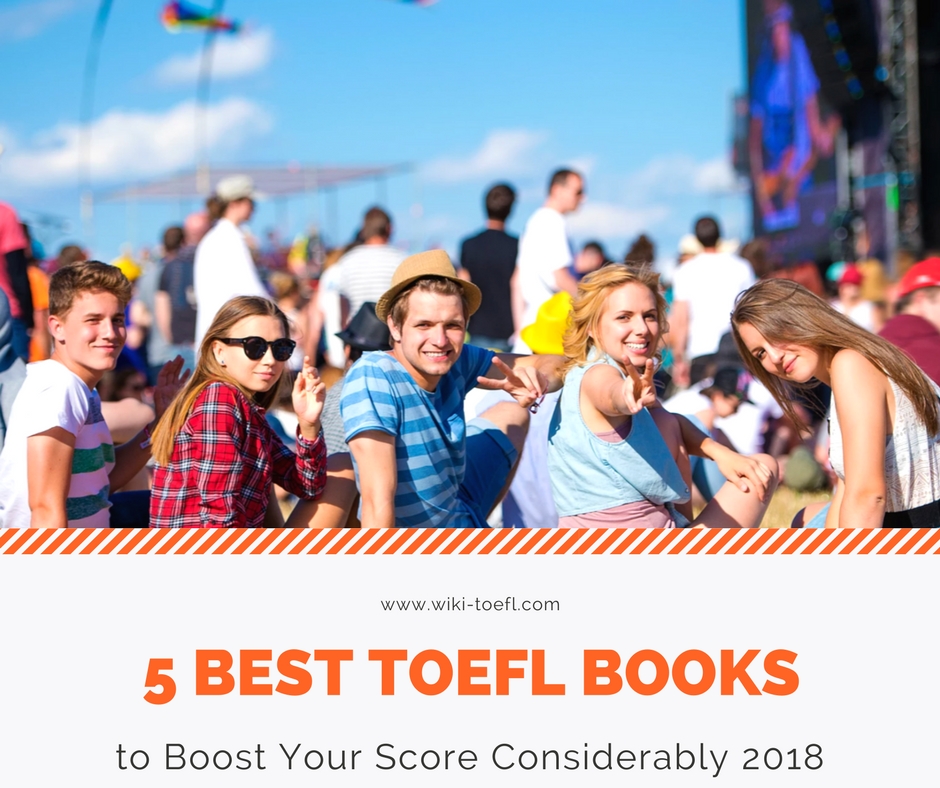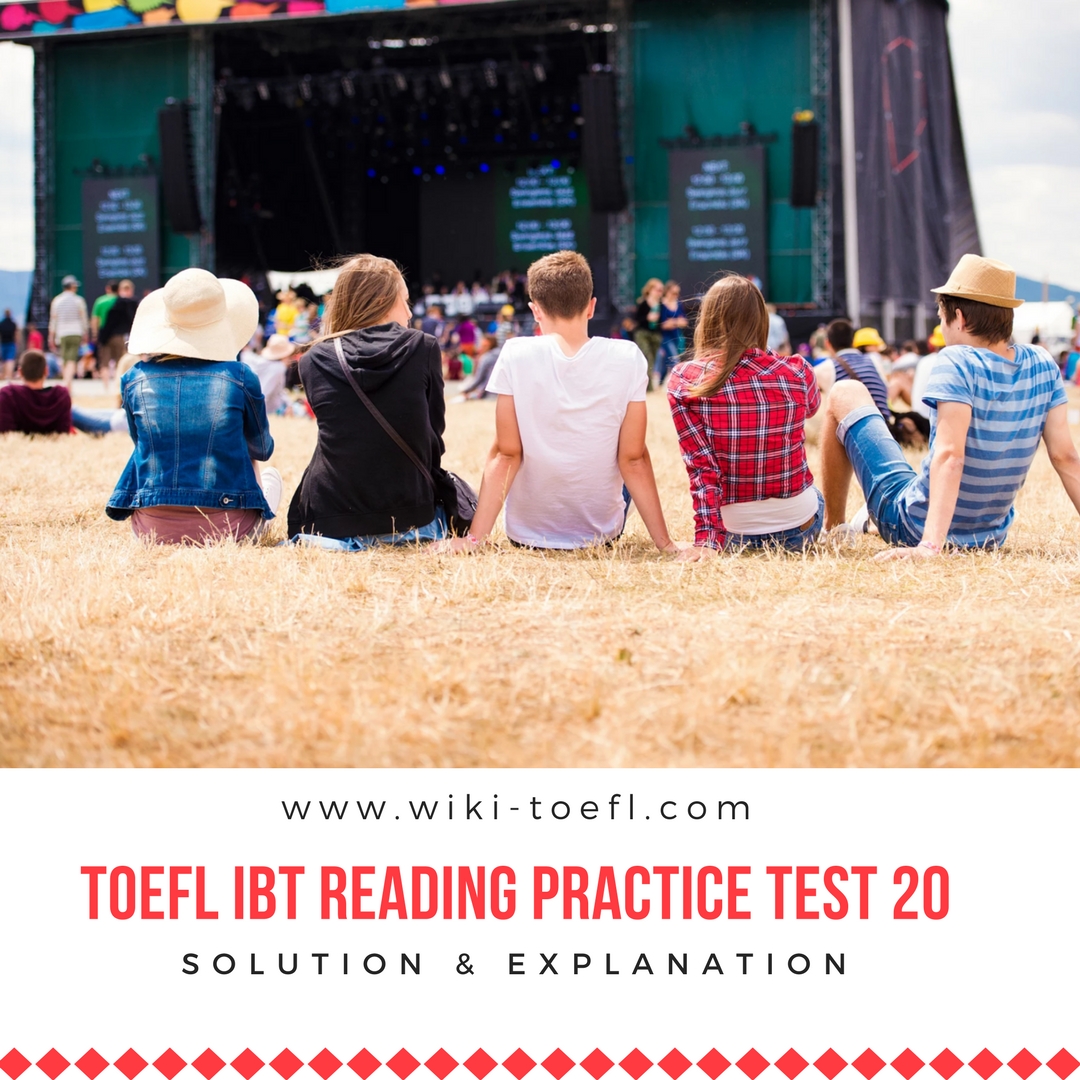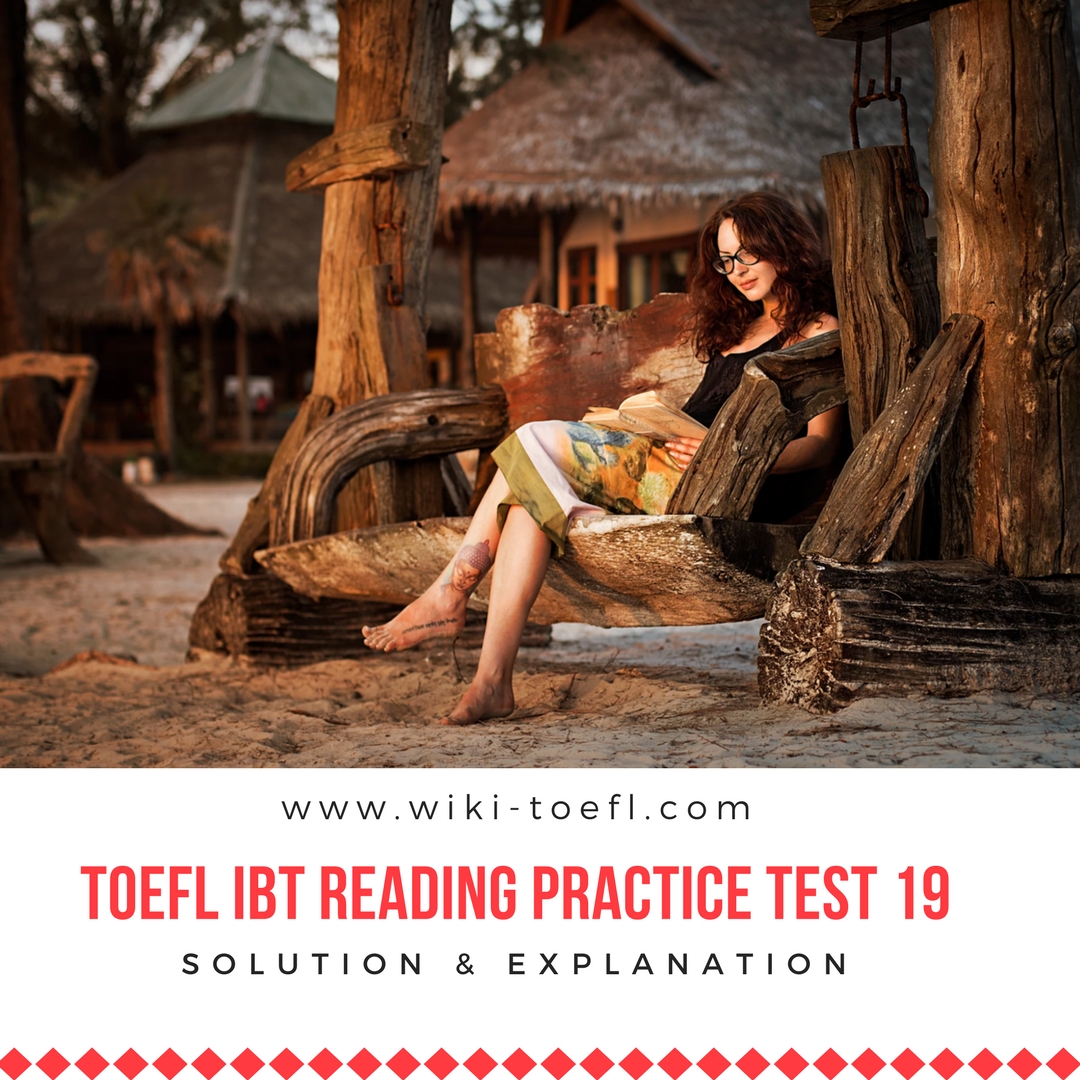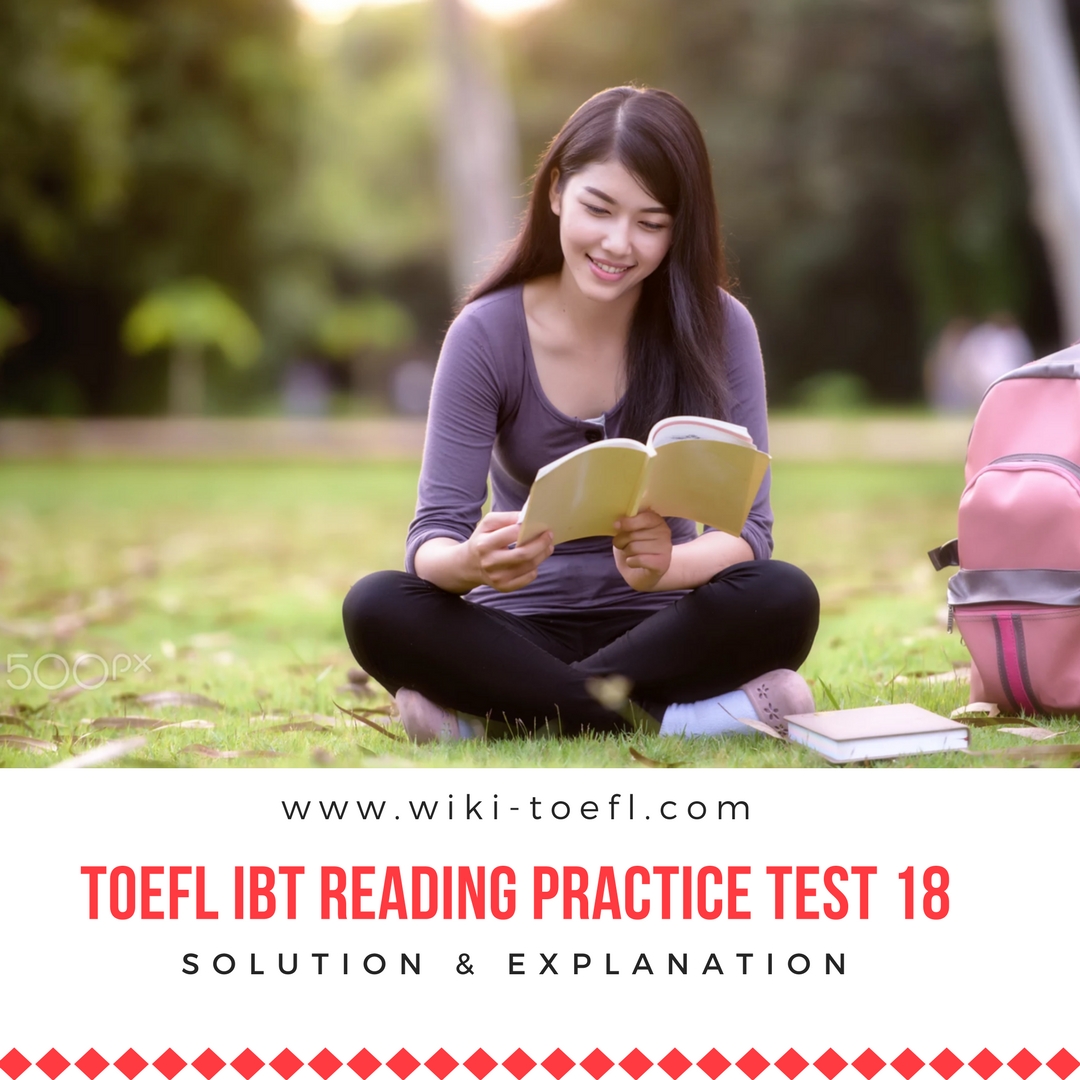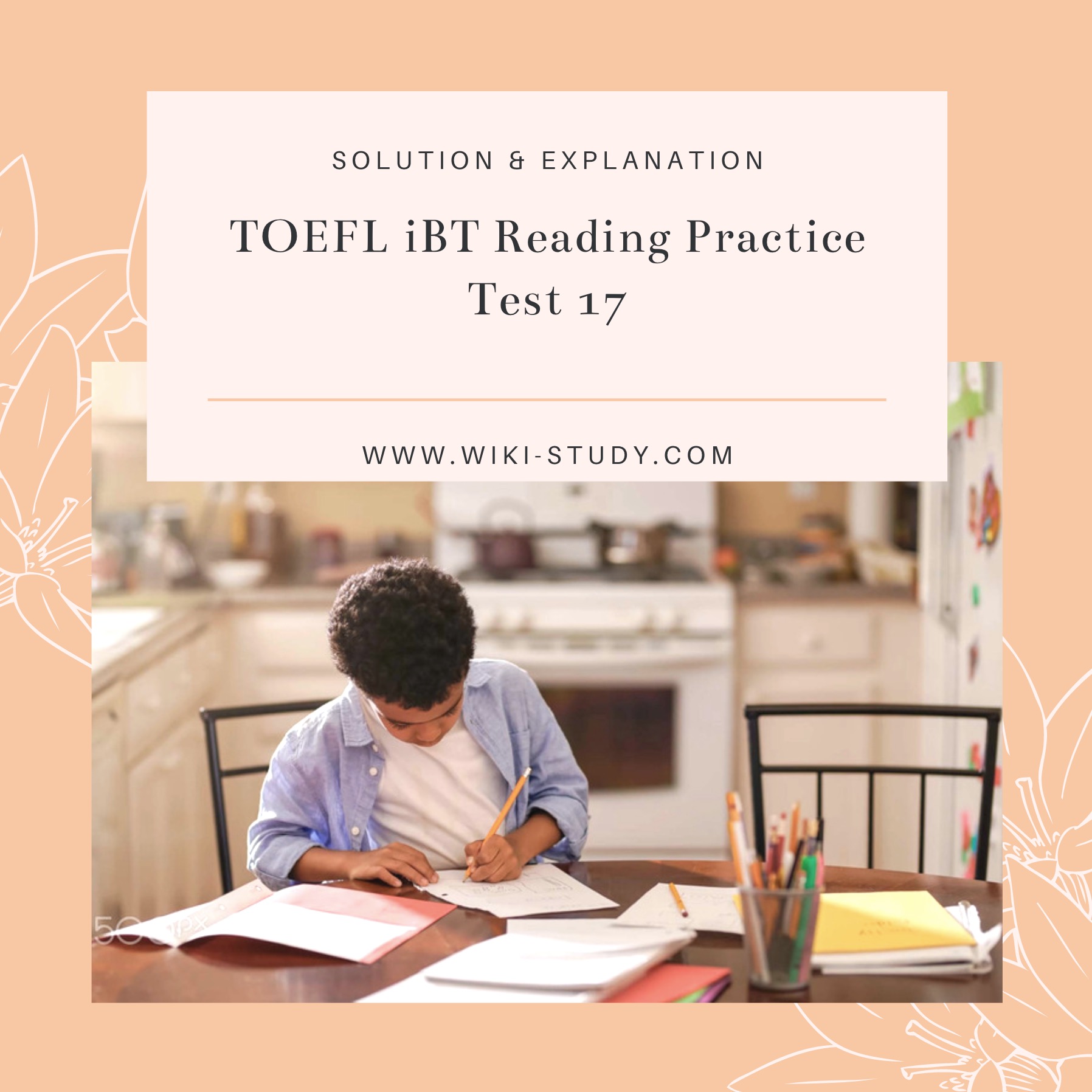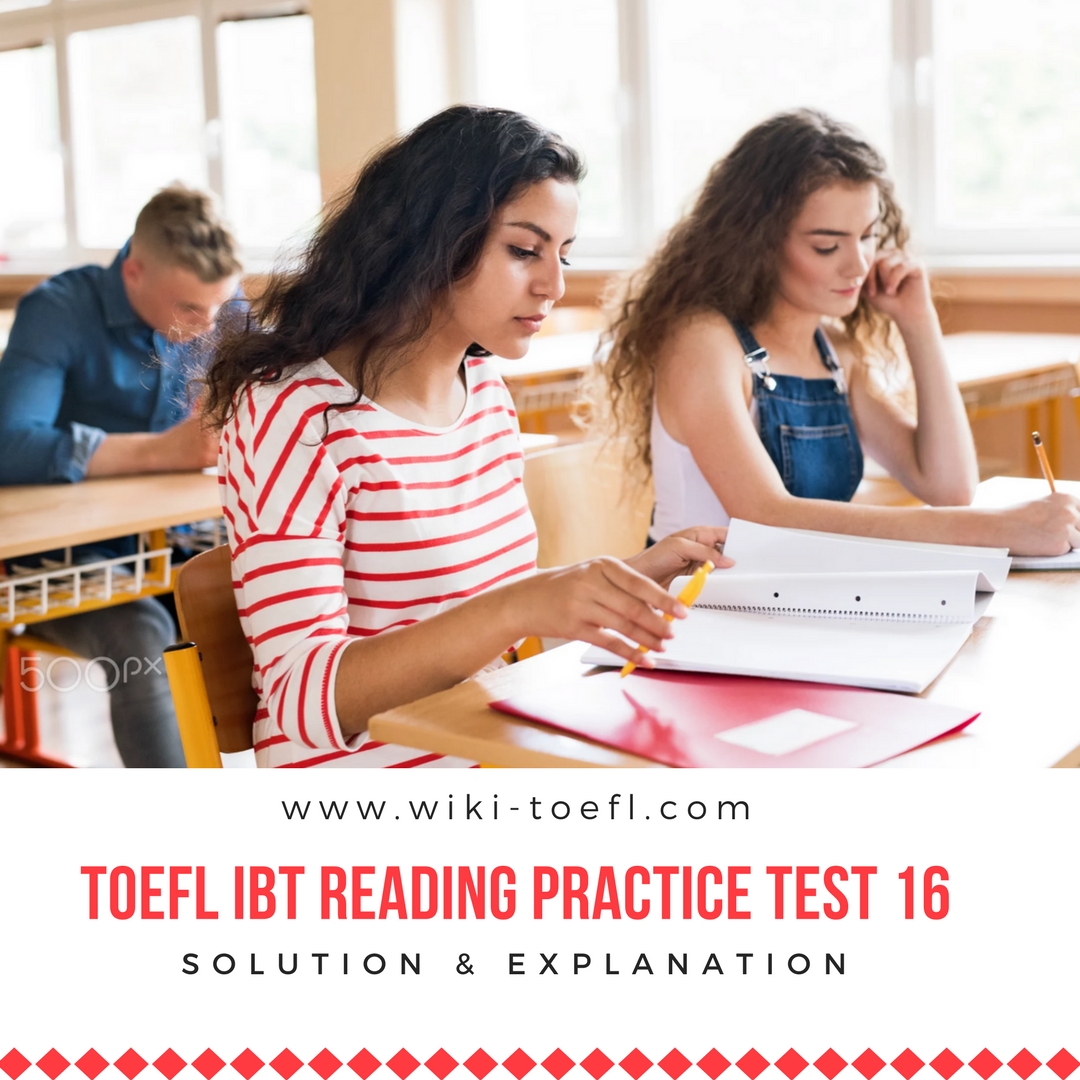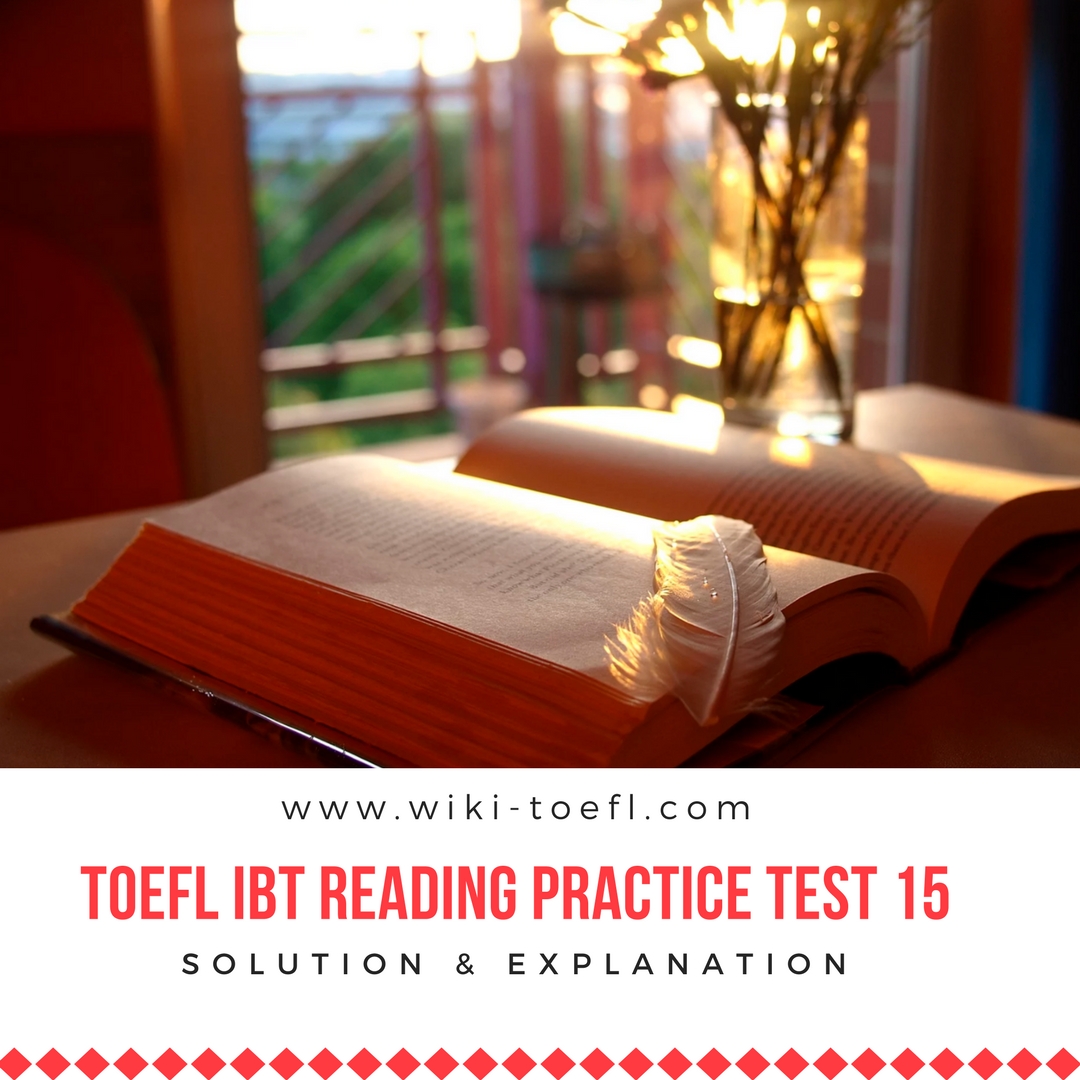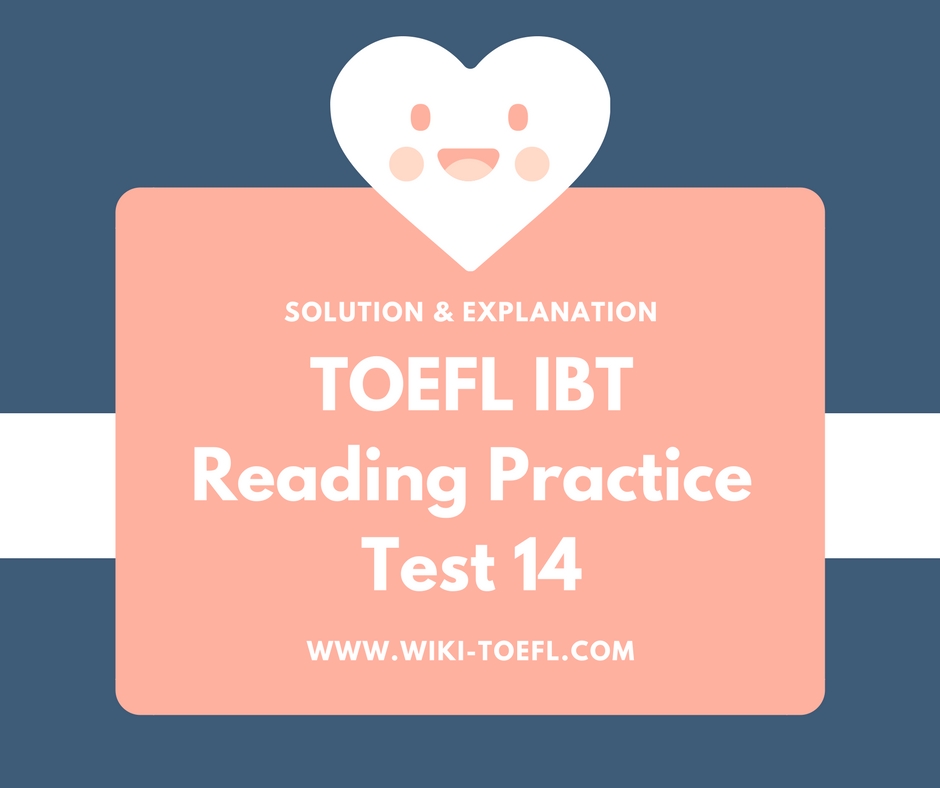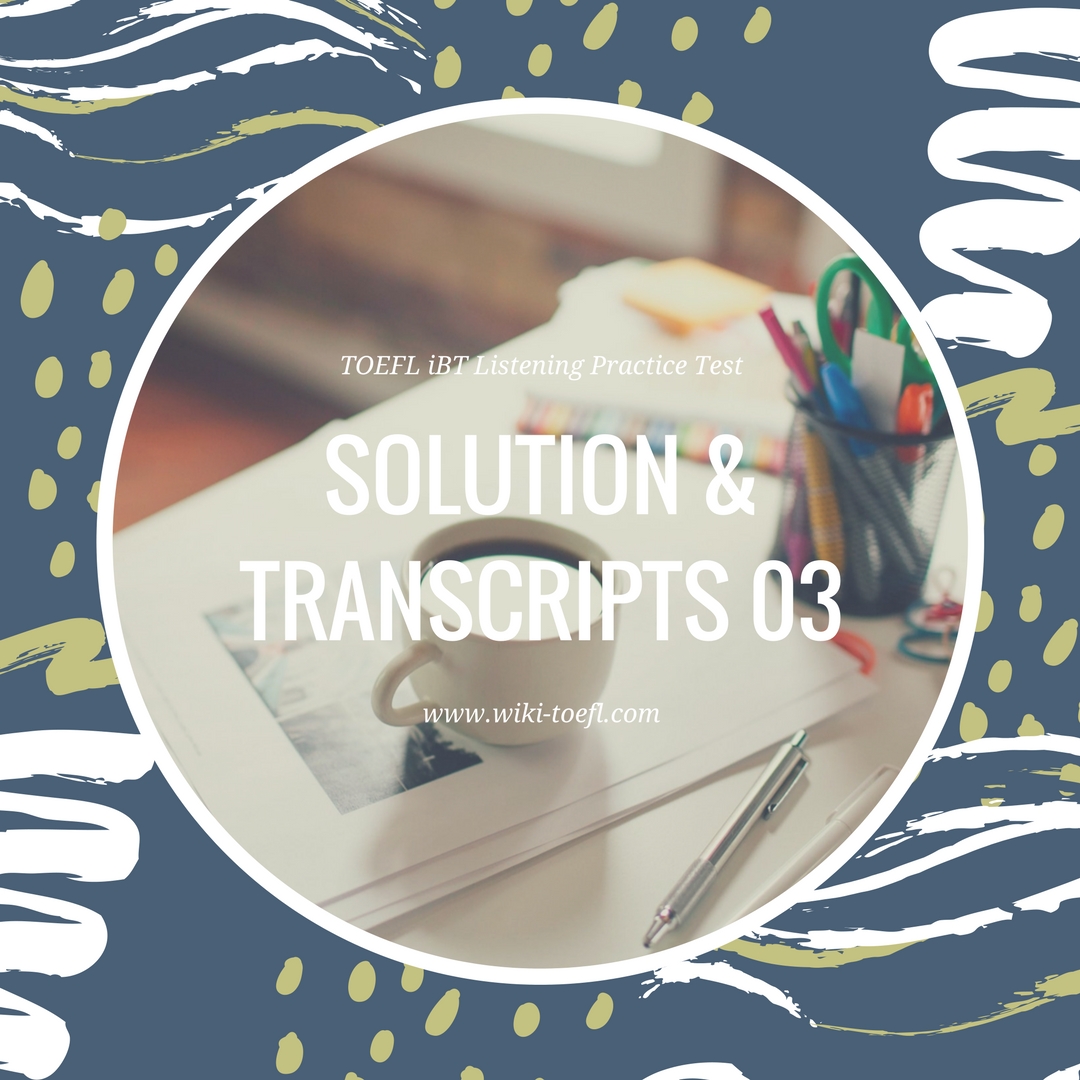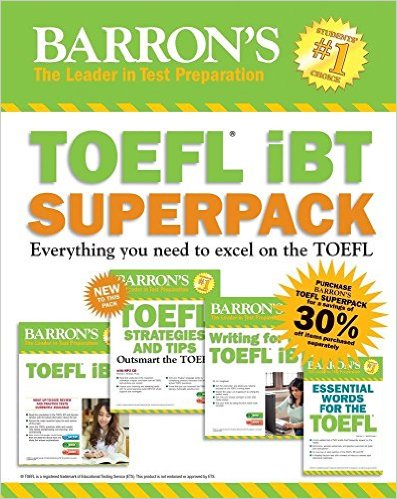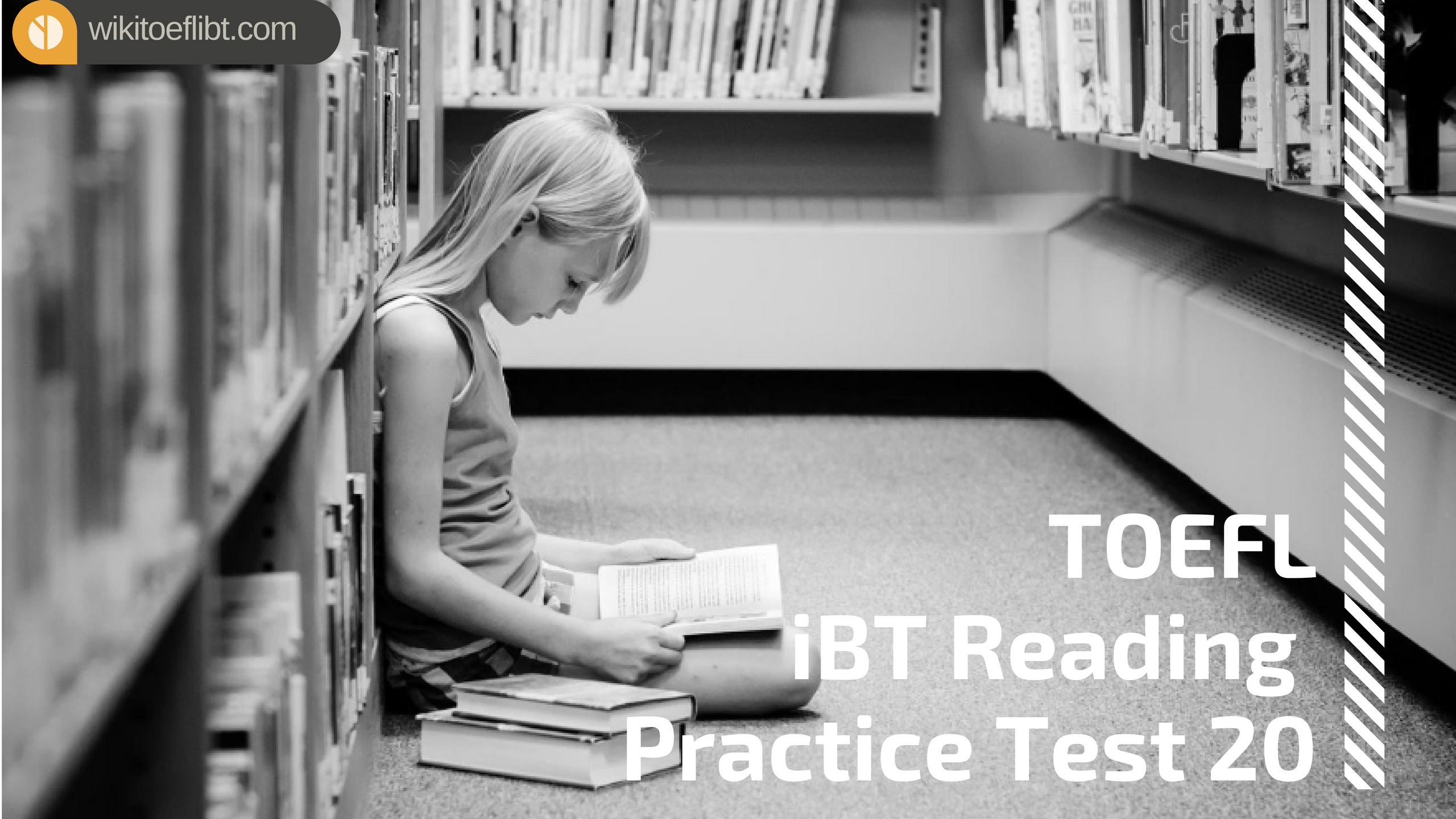Reading 1 “Symbiotic Relationships”
1. C In this passage, obtains is a synonym for “derives.” Context comes from the close association
with the word “benefit.”
2. C “Parasitism is a relationship in which one organism, known as the parasite, lives in or on
another organism, known as the host, from which it [the parasite] derives nourishment.” The pronoun “it” does not refer to Choices A, B, or D.
3. A In this passage, comparatively is a synonym for “relatively.” Context comes from the phrase
“not killed immediately” in the same sentence.
4. C … when the parasite first invades paraphrases “Newly established” and the most destructive
phase paraphrases “more destructive.”
5. A In this passage, permit is a synonym for “tolerate.” Context comes from the phrase “reducing
the harm” in the same sentence.
6. D “Parasites that live on the surface of their hosts are known as ectoparasites.” . . . surface
means “outside.” Choice A is not correct because “mold and mildew” are ectoparasites, not ways that ectoparasites survive. Choices B and C refer to endoparasites, not to ectoparasites.
7. A “Many examples of commensal relationships exist. Orchids use trees as a surface upon which
to grow.” Choices B and D are mentioned as examples of parasites. Choice C is not correct because ants are mentioned with the Acacia as an example of mutualism, not a commensal relationship.
8. C In this passage, really is a synonym for “actually.”
9. B The author uses the example of the Acacia to explain how two species can benefit from contact. “Some species of Acacia, a thorny tree, provide food in the form of sugar. . . Certain species of ants . . . receive food and a place to live, and the [Acacia] tree is protected from animals… ” Both organisms benefit.
10. C “The bacteria do not cause disease but provide the plants with nitrogen-containing molecules.”
Choice A is not correct because the bacteria do not cause disease. Choice B is not correct because the bacteria is used for growth. Choice D is not correct because the nodules supply nitrogen, which is beneficial.
11. A Pronoun reference is a transitional device that connects the insert sentence with the previous
sentence. “Fleas, lice and some molds and mildews are examples of ectoparasites. They [fleas, lice and some molds] live on the feathers of birds or the fur of animals.” Choices B, C, and D are not correct because the pronoun does not refer to endoparasites, which live inside the host and are explained later in the passage.
12. A Because the text explains the types of relationships between species, it must be concluded
that the passage would be found in a chapter about the environment and organisms. Choices B, C, and D are not correct because they are not as closely associated with the main idea.
13. A, D, E summarize the passage. Choice B is true, but it is an example of a commensal relationship
described in major point D. Choice C refers to a mutualistic relationship developed in major point E. Choice F is mentioned as a minor point in the discussion of parasitic relationships described in major point A.
Reading 2 “Civilization”
14. B “… Neolithic settlements were hardly more than villages. But as their inhabitants mastered the art of farming, more complex human societies [civilizations] emerged.” Choice A is not correct because the Neolithic settlements preceded civilizations. Choice C is not correct because agriculture is mentioned as a cause of the rise in complex cultures, not as a definition of civilization. Choice D is not correct because the population centers increased in size as civilizations grew, but other basic characteristics had to be present as well.
15. B “Although copper was the first metal to be utilized in producing tools, after 4000 b.c., craftspeople in western Asia discovered that a combination of copper and tin produced bronze, a much harder and more durable metal than copper. Its [bronze’s] widespread use has led historians to call the period the Bronze Age;.. ” The pronoun “its” does not refer to Choices A, C, or D.
16. B “As wealth increased, such societies began to develop armies and to build walled cities.”
Choices A, C, and D may be logical, but they are not mentioned and may not be concluded from information in the passage.
17. C In this passage, hardly is a synonym for “barely.”
18. D Because the author states that from Neolithic towns “more complex human societies emerged,” it may be concluded that they are mentioned to contrast them with the civilizations that evolved. Choice A is not correct because a Neolithic town does not qualify as a civilization. Choice B is not correct because writing systems were not part of Neolithic settlements. Choice C is not correct because Neolithic settlements were referred to as villages, and no argument was made for the classification.
19. B “… a new social structure … [included] kings and an upper class … free people … and a
class of slaves.” Choice A is not correct because it does not include free people. Choice C is not correct because it does not include free people. Choice D is not mentioned and may not be concluded from information in the passage. The new structure described is based on economics, not on education.
20. A … the majority paraphrases “most of which.”
21. A In this passage, fundamental is a synonym for “crucial.”
22. B In this passage, important is a synonym for “prominent.” Context comes from the word “monumental” in the same sentence.
23. B “A number of possible explanations of the beginning of civilization have been suggested.”
Choice A is not correct because scholars do not agree on one explanation. Choice C is not correct because trade routes are not mentioned in paragraph 4. Choice D is not correct because coincidence is not mentioned as one of the possible explanations.
24. C Choice A is mentioned in paragraph 4, sentence 9. Choice B is mentioned in paragraph 4, sen
tence 8. Choice D is mentioned in paragraph 4, sentence 6.
25. B A rhetorical question is a question that is asked and answered by the same speaker. Response
is a transitional device that connects the insert sentence with the previous rhetorical question. Choices A, C, and D are not correct because the pronoun “they” in the insert sentence does not refer to plural nouns in the previous sentence.
26. B, E, F summarize the passage. Choice A is true, but it is a minor point that is mentioned as an
example of the characteristics of a class structure. Choice C may be one of the architectural structures built, but it is not specified. Choice D is true of Mesopotamia and Egypt, but is not developed as a major point.
Reading 3 “Life in Our Solar System”
27. D In this passage, naturally is a synonym for “automatically.” Context comes from the prefix auto,
which means “self and the root matic, which is found in many words that refer to “machines.”
28. C “The moon is airless, and although some data suggest ice frozen in the soil at its poles, it [the moon] has never had liquid water on its surface.” The pronoun “it” does not refer to Choices A, B, or D.
29. A “Venus has some traces of water vapor in its atmosphere, but it is much too hot for liquid water to survive.” Choice B is not correct because the water transformed to vapor, not ice. Ice refers to our moon, not to Venus. Choice C is not correct because the lakes or oceans evaporated auicklv. Choice D is not correct because the airless atmosphere refers to Mercury, not to Venus.
30. C In this passage, constant is a synonym for “stable.” Context comes from the contrast with “evolve” later in the sentence.
31. B Because Jupiter’s moon is used as an example of satellites of Jovian planets, it must be concluded that Jupiter is a Jovian planet. Choice A is not correct because the satellites, not the planets, have conditions that support life. Choice C is not correct because the size of Europa is not mentioned. Choice D is not correct because the author draws no conclusion about the change of orbits. If orbits were modified, then a conclusion could be drawn about whether Europa was frozen.
32. C “.. . life there may be unlikely because of the temperature. The surface of Titan is a deadly -179°C.” Choice A is not correct because there are oceans of liquid methane and ethane. Choice B is true, but it is not the reason why life would be improbable. Choice D is not correct because it is the temperature, not the atmosphere, that is low.
33. B . ..the evidence did not demonstrate paraphrases “the results did not confirm.”
34. C In this passage, begun is a synonym for “originated.” Context comes from the root origin, which means “beginning.”
35. C “ALH84001 is important because a team of scientists studied it and announced in 1996 that it contained chemical and physical traces of ancient life on Mars.” Choice A is not correct because the meteorite was found closer to twenty years ago. Choice B is not correct because the impact on Mars was not recent. Choice D is true, but it is not the reason why the author mentions the meteorite.
36. B “… conclusive evidence [of life] may have to wait until a geologist in a space suit can … open rocks … searching for fossils.” Choice A is not correct because a geologist will travel in the spacecraft. Choice C is not correct because pictures are not mentioned as a way to confirm the existence of life on Mars. Choice D is not correct because the present conditions could be studied in a variety of ways, but conclusive evidence depends on a manned flight that will allow a geologist to study the physical evidence.
37. C “We are left to conclude that, so far as we know, our solar.system is bare of life except for Earth.” Choice A is not correct because the author states that our solar system is bare of life. Choice B is not correct because the evidence is not encouraging. Choice D is not correct because the search takes us to other planetary systems.
38. C Reference is a transitional device that connects the insert sentence with the previous sentence. Such periods refers to “some points in history.” Choices A, B, and D are not correct because such periods does not refer to phrases in the sentences that precede the insert options.
39. F, D, B summarize the passage. Choice A is a minor point that supports the major point in Choice B. Choice C is a minor point that supports the major point in Choice D. Choice E is not true because the author entertains the possibility of life based on something other than carbor chemistry.







